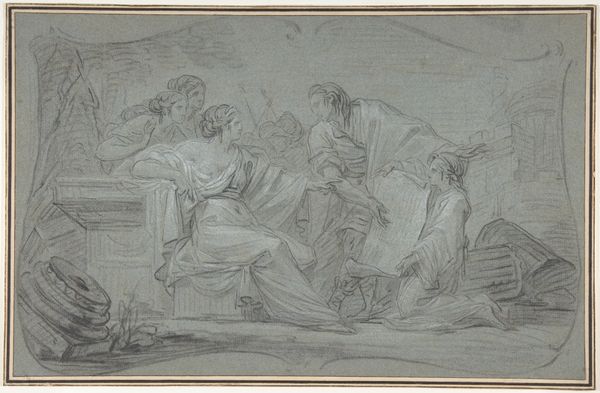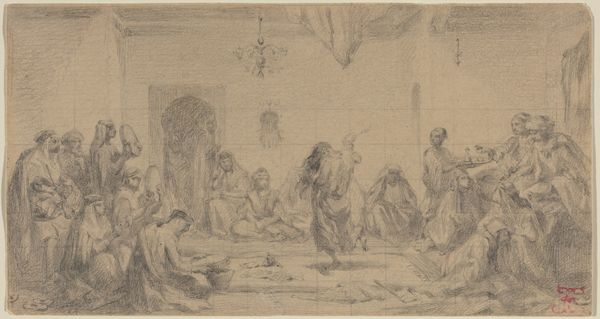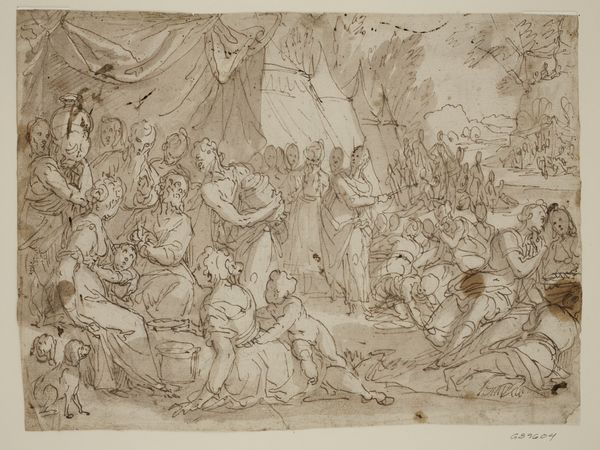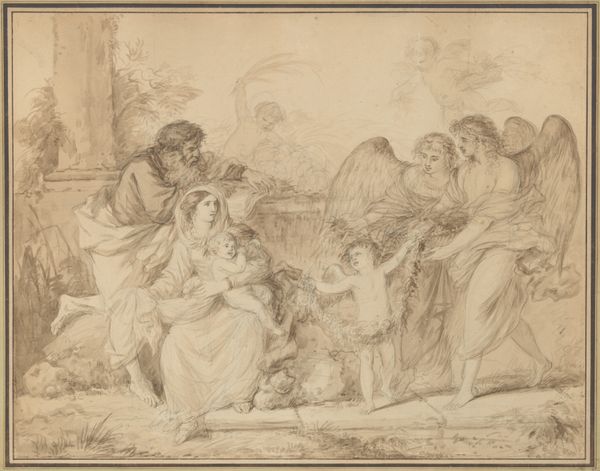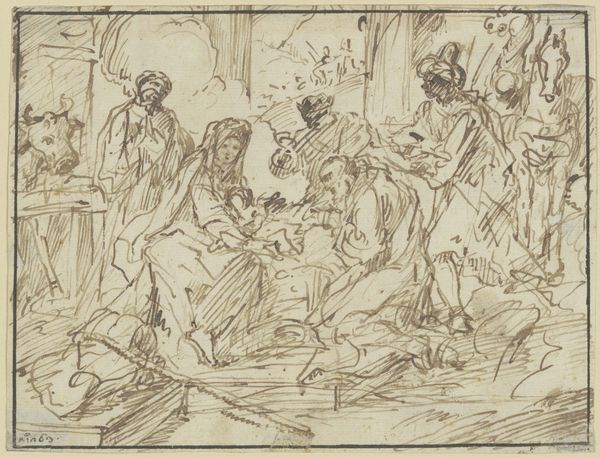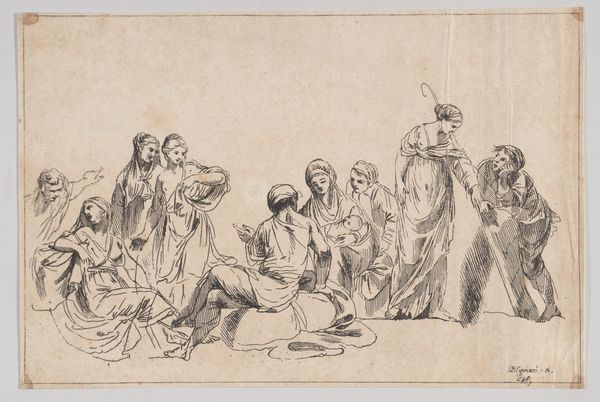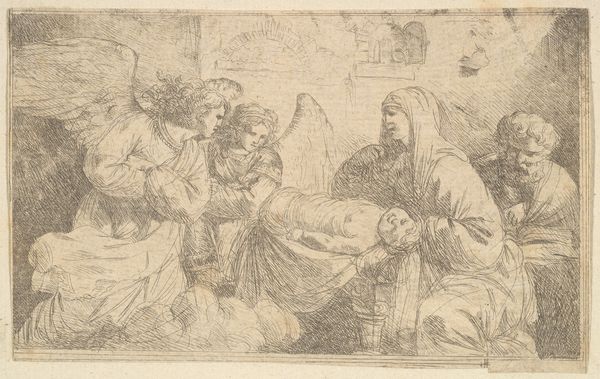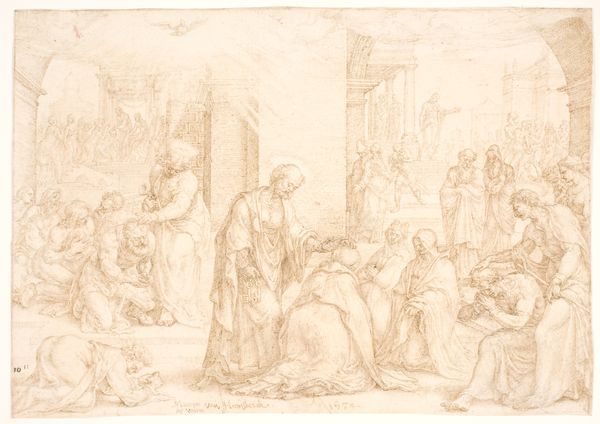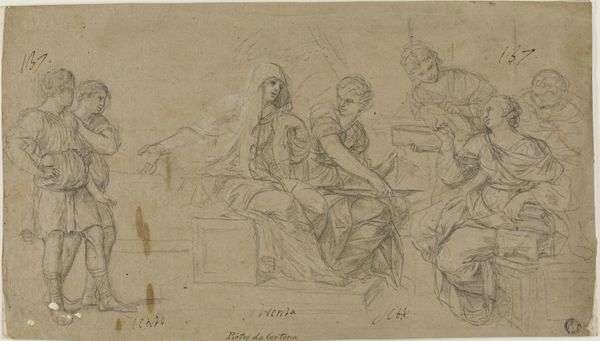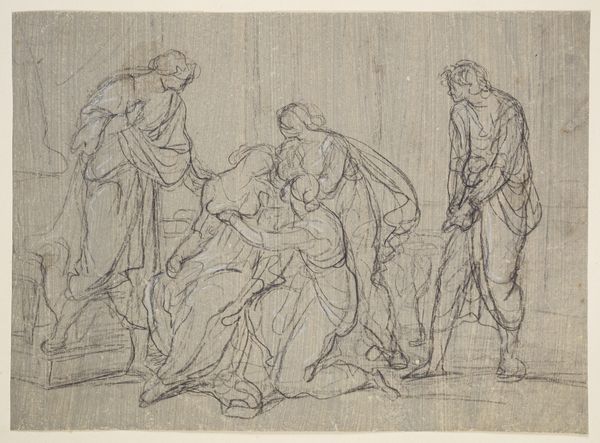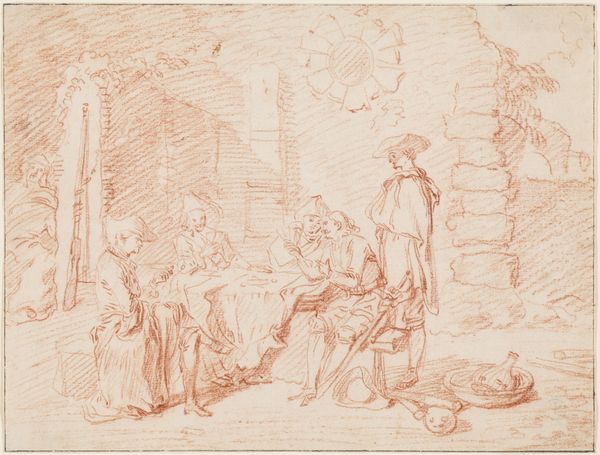
L'Adoration des Bergers (The Adoration of the Shepherds) 1762 - 1763
0:00
0:00
Dimensions: Mount: 19 1/8 × 9 1/8 in. (48.6 × 23.2 cm) Sheet: 4 3/16 × 6 in. (10.6 × 15.2 cm)
Copyright: Public Domain
Editor: Here we have Jean Jacques Lagrenée’s “The Adoration of the Shepherds” from 1762-1763. It’s a pencil and possibly ink drawing on paper, now a print, depicting the Nativity scene. The rough, unfinished quality of the line work makes the scene feel immediate and raw, rather than idealized. What catches your eye when you look at this drawing? Curator: What strikes me is the sheer labor implied in producing an image like this, even as a study. The repetitive, almost frantic, hatching that defines form and space points to the intense concentration and physical effort involved in creating an image during this period. What were the working conditions for artists like Lagrenée? How did the studio system shape the availability and affordability of art supplies? Editor: That’s a good point. I hadn't thought about the economics of art production back then. So, are you saying the materiality of the drawing itself, the pencil, the paper, even the act of drawing, informs our understanding? Curator: Precisely. Consider the hierarchy embedded in the art world: history painting versus genre scenes, oil painting versus drawing. This drawing, as a preparatory study, occupies a liminal space. It's a functional object, a tool in the production of "high art," but also a work of art in its own right. How does its status as a print further complicate its relationship to value and accessibility? Editor: So, the printmaking process democratizes the image, making it available to a wider audience but also distancing it from the artist's hand, from that original act of labor. Fascinating! It is also interesting to see that some smaller vignette scenes at the bottom border act like trials. Curator: Exactly. It forces us to think about art not just as an object of aesthetic contemplation, but as a product of material conditions, labor, and social forces. What implications do you think this analysis has for how we value art today? Editor: This reframes how I see art historical value; from artistic genius, toward art being valued also based on labor, access, and production means. Thanks for this new lens.
Comments
No comments
Be the first to comment and join the conversation on the ultimate creative platform.
